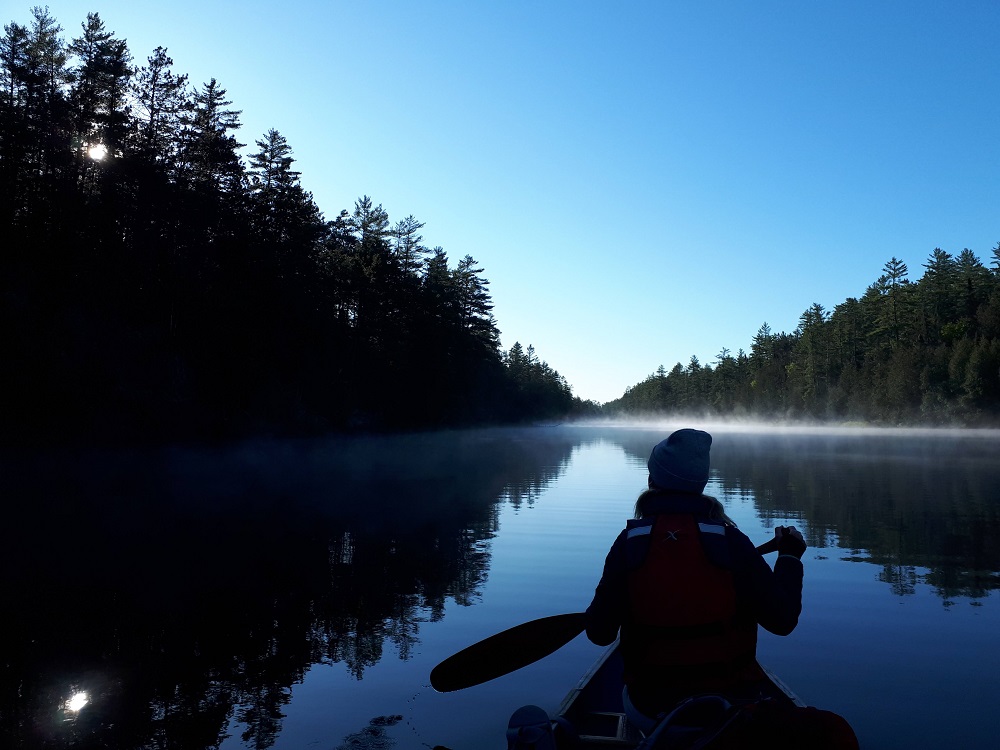Fall is the perfect time to paddle.
As the temperatures cool there are no bugs and the lakes become less crowded. Plus you can catch some of our beautiful fall colours!
But fall weather can be fickle. Hitting the lake too late, failing to respect weather conditions, or paddling beyond your skill level isn’t just risky — it’s downright dangerous.
We chatted with Paul Smith, Superintendent of Kawartha Highlands Signature Site, to get some top do’s and don’ts for fall paddling safety:
1. Don’t skimp on the planning
Check the forecast, study your route, and don’t hesitate to call the park if you’ve got questions.
And make sure you share your itinerary with someone you trust. If anything goes wrong, you want emergency crews to be contacted (and able to locate you) as quickly as possible.
2. Pack like it’s winter
Yes, we know the days might seem warm now, but trust us: if you get soaked in a fall storm, it’ll feel like winter. Pack everything you need to keep your group dry and warm, no matter the weather.
If you’ve packed right, you should have everything you need to survive on your own for an extended period of time (in the event of a worst-case scenario).
3. Waterproof your essentials

Keep your survival gear dry. Carry your satellite phone / spot unit / cell phone in waterproof case. You’ll also want a waterproof container with matches and emergency supplies (including a map, compass and first aid kit). Don’t underestimate the importance of dry blankets (at least one or two per person) in the event of a flip.
Your emergency gear’s no good to you at the bottom of the lake. Keep it on your person and/or lashed to your (float-bagged) canoe.
4. Waterproof yourself

Make sure you pack weather-appropriate clothing. That means winter gear, including layers, a waterproof shell and warm gloves. Nice weather on your driveway doesn’t always mean nice weather on the water.
And trust us: keep those waterproofed matches on your person.
5. Paddle smart
Know your skill level and stay out of rough water. Paddle during daylight hours.
Whether you’re visiting a park located near a hydro dam or not, our friends at Ontario Power Generation want to remind you to please always read and respect posted signage while paddling.
Stick to the shoreline; don’t cut through the middle of the lake. The water will be calmer and if you flip, you’re that much closer to shore.
Don’t overload your canoe. It might mean two trips, but it can be the difference between staying dry and arriving safely, and getting drenched with your gear underwater.
And, of course: always, always wear your lifejacket or flotation suit.
6. Know what to do if something goes wrong
Despite your best efforts, the worst happens. Your canoe tips. Someone is injured. You’re stranded by rough weather.
Not sure what to do in those situations? That’s a good signal that you might not be ready for this trip.
If you have more learning to do, check out the Ontario Recreational Canoeing and Kayaking Association, Paddle Canada, or our events page to find classes.
7. Don’t be embarrassed to go home
We mean it. Sure, it can be frustrating to turn back, but this is often the smartest option. It’s just not worth the risk.
Some signs it’s time to pack it in:
- There’s ice on the lake (even along the shoreline)
- There are whitecaps on the water
- You feel unsure of your ability (and/or the ability of your fellow campers)
Wherever your fall adventure takes place, stay safe on the water. Happy paddling!
 Ontario Parks thanks corporate partners like OPG for their support.
Ontario Parks thanks corporate partners like OPG for their support.





